Co-Director, World Inequality Lab
inequalitylab.world | WID.world
http://piketty.pse.ens.fr/
If we look at wealth inequality, we see that it has always been extremely high, with the bottom 50% holding only a tiny share of total wealth. Despite this, there has been a significant long-run movement toward greater wealth equality in rich countries, particularly in Western and Nordic Europe.

If we look at wealth inequality, we see that it has always been extremely high, with the bottom 50% holding only a tiny share of total wealth. Despite this, there has been a significant long-run movement toward greater wealth equality in rich countries, particularly in Western and Nordic Europe.
Our study compares Europe and the United States and challenges the widespread belief that rising inequality in the US since the 1980s has fueled innovation and productivity, especially in high-tech sectors. In fact, we find the opposite.

Our study compares Europe and the United States and challenges the widespread belief that rising inequality in the US since the 1980s has fueled innovation and productivity, especially in high-tech sectors. In fact, we find the opposite.
If we take Nordic Europe (1990)as a benchmark for equality, and aim even higher, we can envision a world where the gap between top and bottom incomes falls to 3–5× by 2100, versus 50-160 today.

If we take Nordic Europe (1990)as a benchmark for equality, and aim even higher, we can envision a world where the gap between top and bottom incomes falls to 3–5× by 2100, versus 50-160 today.
Other inequality indicators tell the same story.
A century ago, the richest 0.1% earned 150–250× more than low-income earners in Europe. Today, that gap is down to 8–15× in Sweden, Denmark, Norway & the Netherlands — and 15–20× in Germany, France & Britain.
A striking drop in inequality.

Other inequality indicators tell the same story.
A century ago, the richest 0.1% earned 150–250× more than low-income earners in Europe. Today, that gap is down to 8–15× in Sweden, Denmark, Norway & the Netherlands — and 15–20× in Germany, France & Britain.
A striking drop in inequality.


The call for papers is open until December 1.
🔗 More details & submission: inequalitylab.world/en/event/wor...


The call for papers is open until December 1.
🔗 More details & submission: inequalitylab.world/en/event/wor...



Public wealth, by contrast, has declined to turn negative in North America, fall near zero in Europe, while East Asia has stabilized with 25-30% of national wealth in public hands.


Public wealth, by contrast, has declined to turn negative in North America, fall near zero in Europe, while East Asia has stabilized with 25-30% of national wealth in public hands.
Global wealth-income ratios have risen dramatically from about 390% of world net domestic product in 1980 to over 625% in 2025. This surge reflects both higher savings and strong capital gains, especially in housing and equity markets.

Global wealth-income ratios have risen dramatically from about 390% of world net domestic product in 1980 to over 625% in 2025. This surge reflects both higher savings and strong capital gains, especially in housing and equity markets.
Our book with Julia Cagé is out at @harvardpress.bsky.social >>> www.hup.harvard.edu/books/978067...
All data sets available below 👇

Our book with Julia Cagé is out at @harvardpress.bsky.social >>> www.hup.harvard.edu/books/978067...
All data sets available below 👇
[9/10]
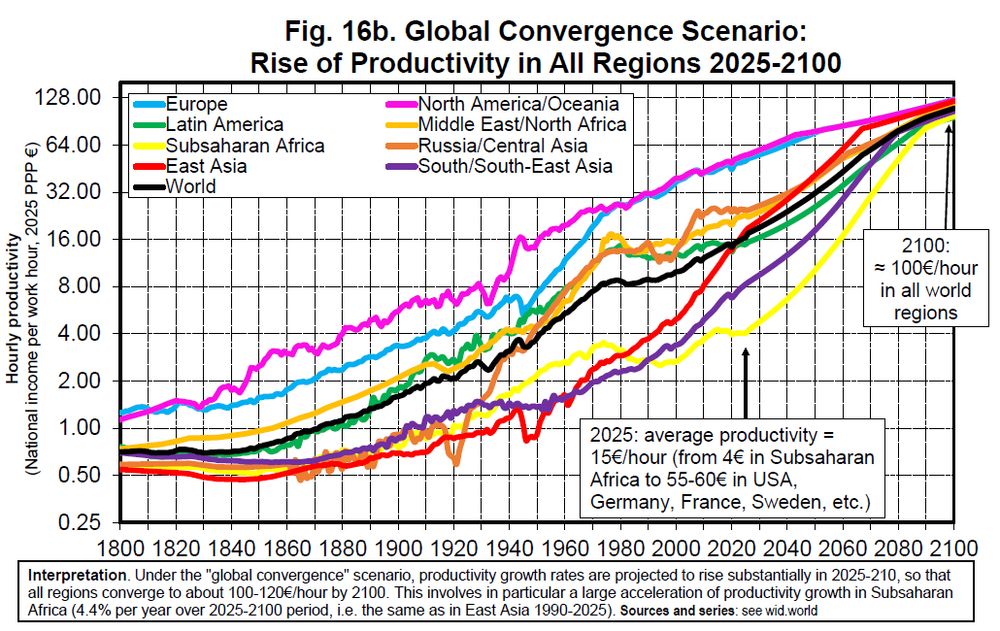
[9/10]
[8/10]
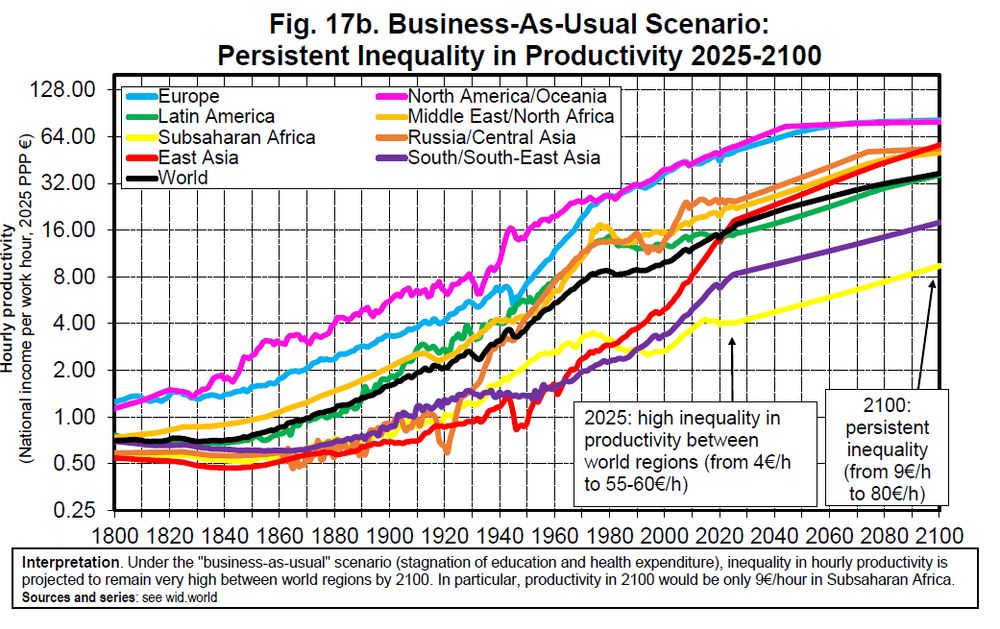
[8/10]
• education (vs. health)
• public (vs. private) spending
• poorer countries — with returns up to 20% a year
[7/10]
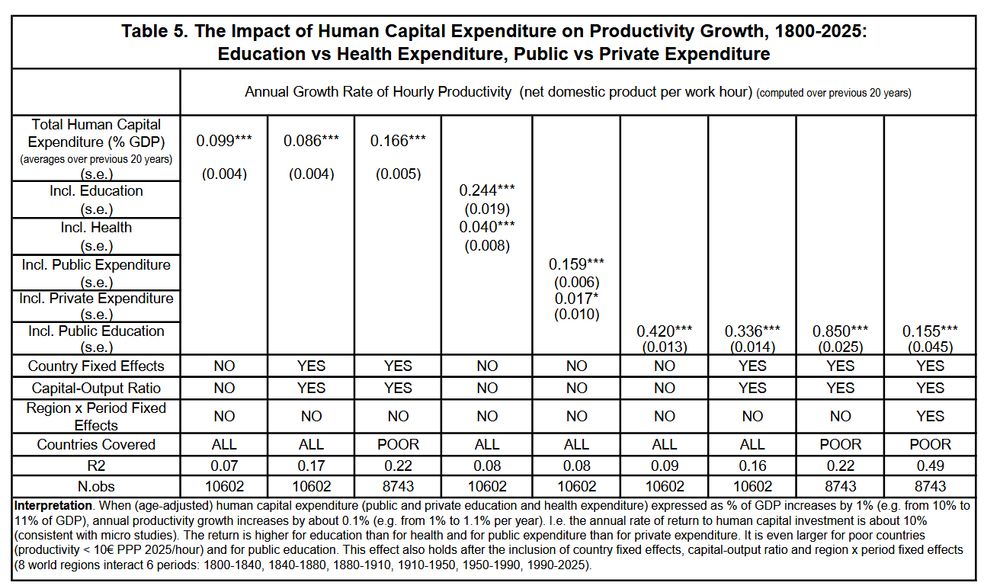
• education (vs. health)
• public (vs. private) spending
• poorer countries — with returns up to 20% a year
[7/10]
[6/10]
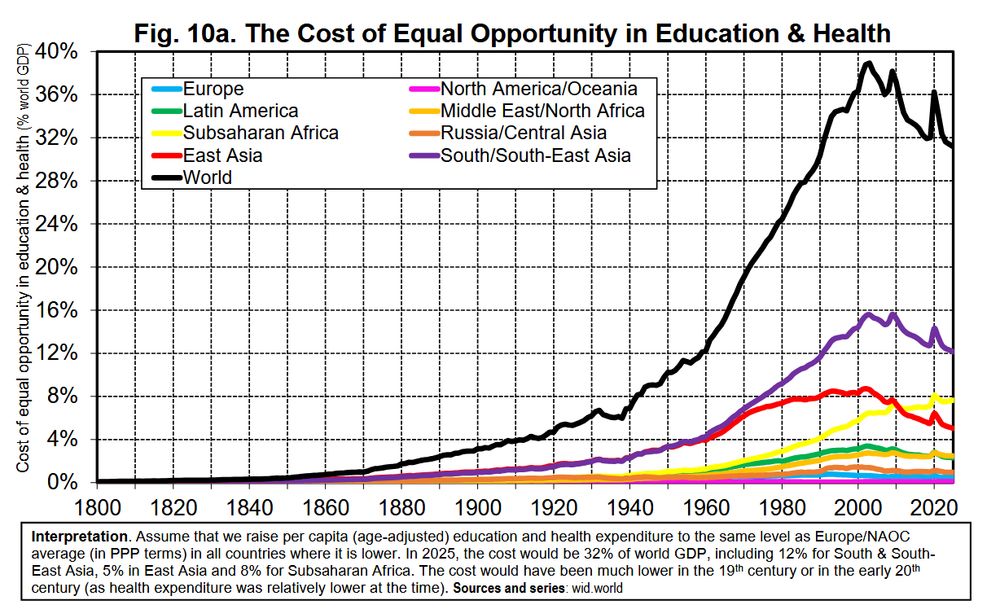
[6/10]
The gap widens even more with private spending (though we know that high private health costs in the US don’t necessarily lead to better health outcomes).
[5/10]

The gap widens even more with private spending (though we know that high private health costs in the US don’t necessarily lead to better health outcomes).
[5/10]
🎓Today, a child in Sub-Saharan Africa receives 220€ in public education spending compared to 9,025€ in North America – a gap of almost 1 to 50.
[4/10]
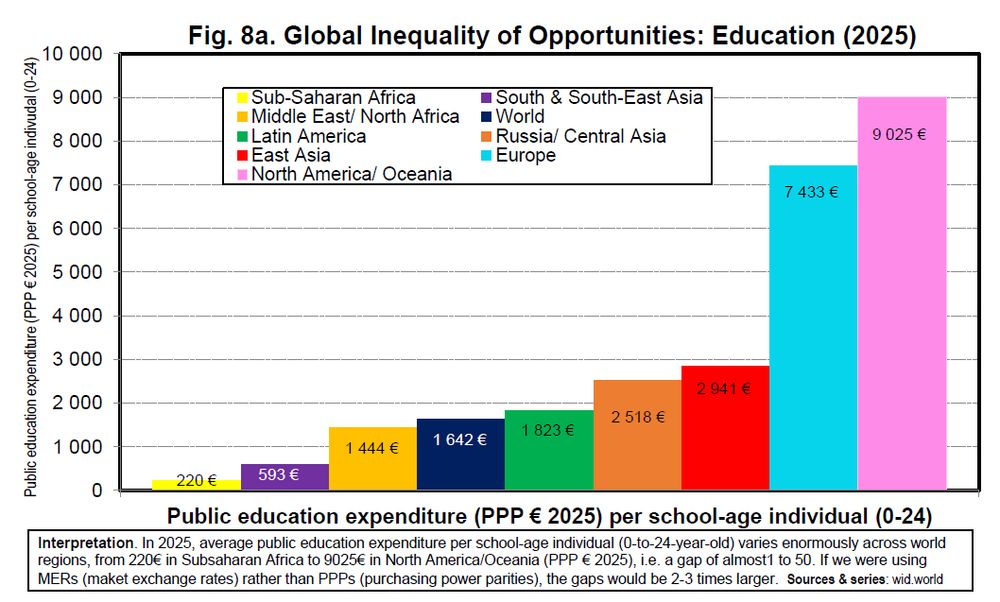
🎓Today, a child in Sub-Saharan Africa receives 220€ in public education spending compared to 9,025€ in North America – a gap of almost 1 to 50.
[4/10]
This reflects the expansion of the “global social state”, supported by states’ growing capacity to collect direct income taxes & social contributions.
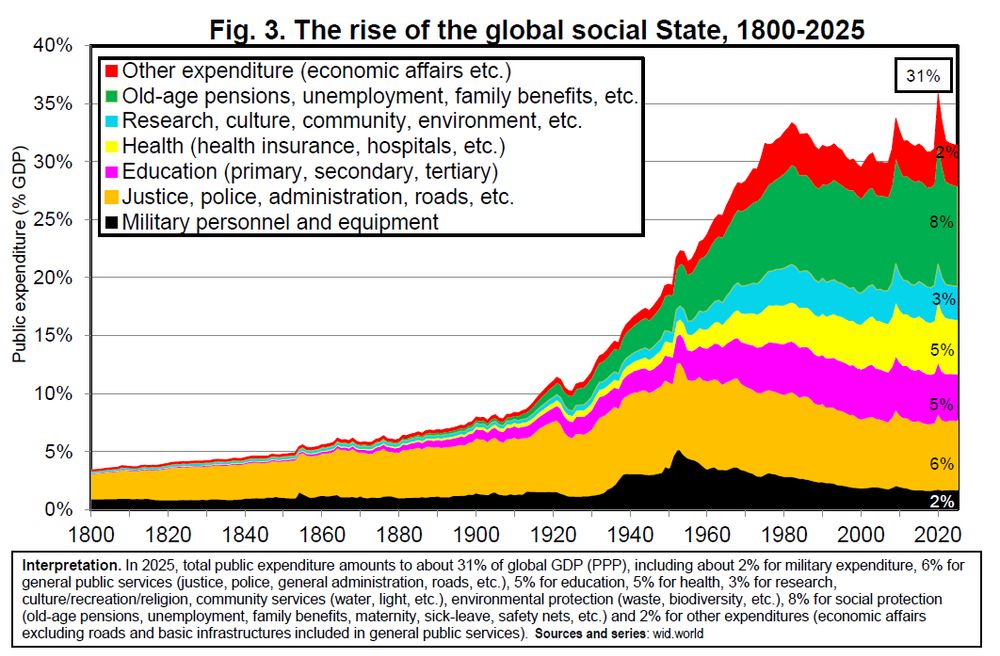
This reflects the expansion of the “global social state”, supported by states’ growing capacity to collect direct income taxes & social contributions.
[2/10]
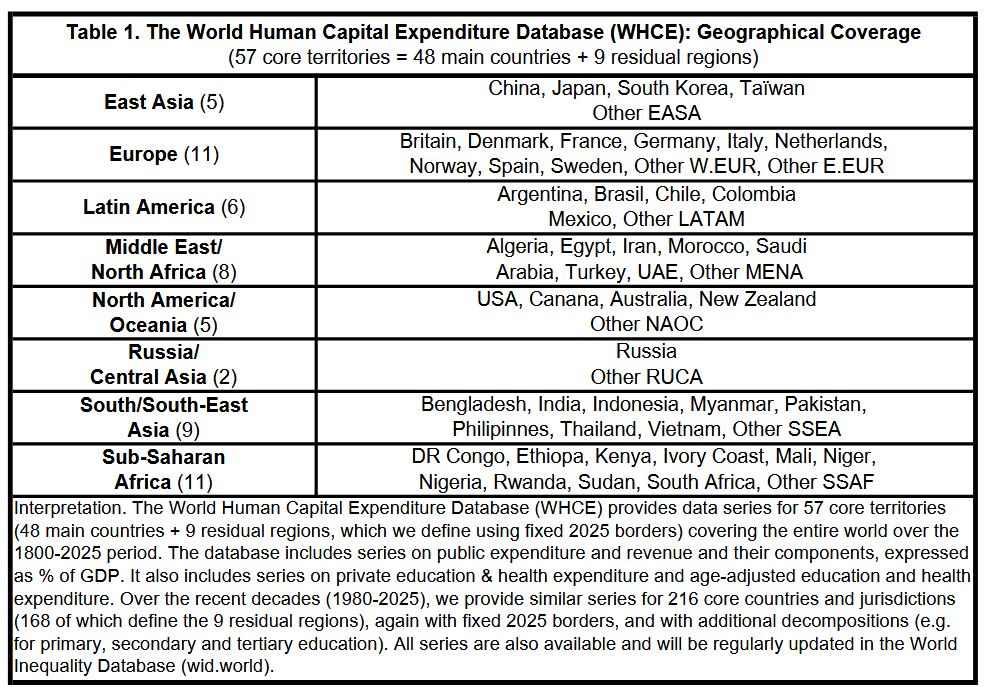
[2/10]
1️⃣Global Labour Hours in Paid and Unpaid Work wid.world/document/glo...
2️⃣Unequal Exchange and North-South Relations wid.world/document/une...
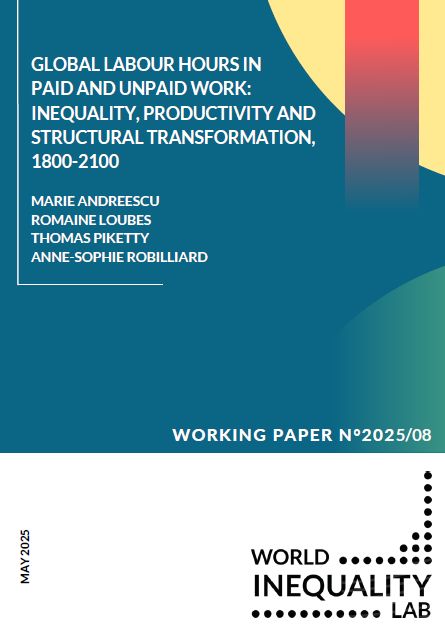
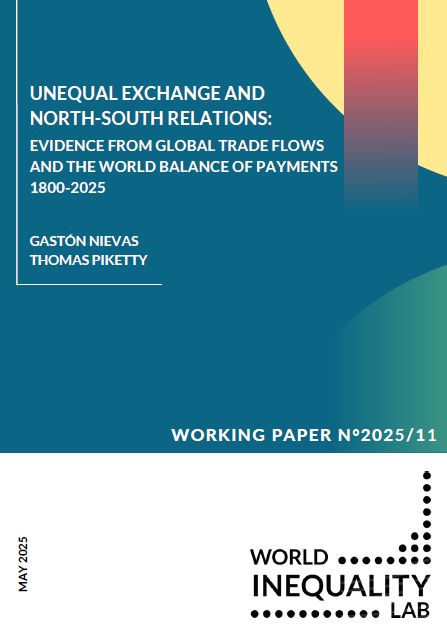
1️⃣Global Labour Hours in Paid and Unpaid Work wid.world/document/glo...
2️⃣Unequal Exchange and North-South Relations wid.world/document/une...
But if we invest in human capital and infrastructure in the Global South, the world in 2100 could look radically different:
💶 Productivity converging to ~€100/hour
🕒 Less working hours for all
♀️ Drop in gender gaps
🌍 Labor shift away from high-pollution sectors
[7/8]

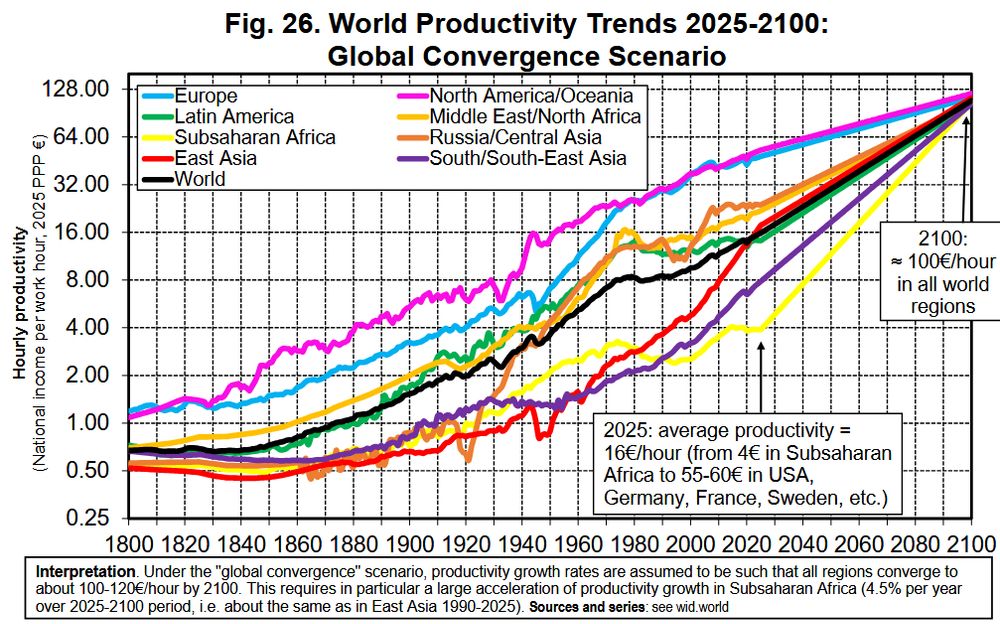
But if we invest in human capital and infrastructure in the Global South, the world in 2100 could look radically different:
💶 Productivity converging to ~€100/hour
🕒 Less working hours for all
♀️ Drop in gender gaps
🌍 Labor shift away from high-pollution sectors
[7/8]
When unpaid domestic work is factored in, the “real” gender pay gap in hourly earnings rises to 40–50% in high-income countries—double the conventional estimates of 10–20%.
[6/8]
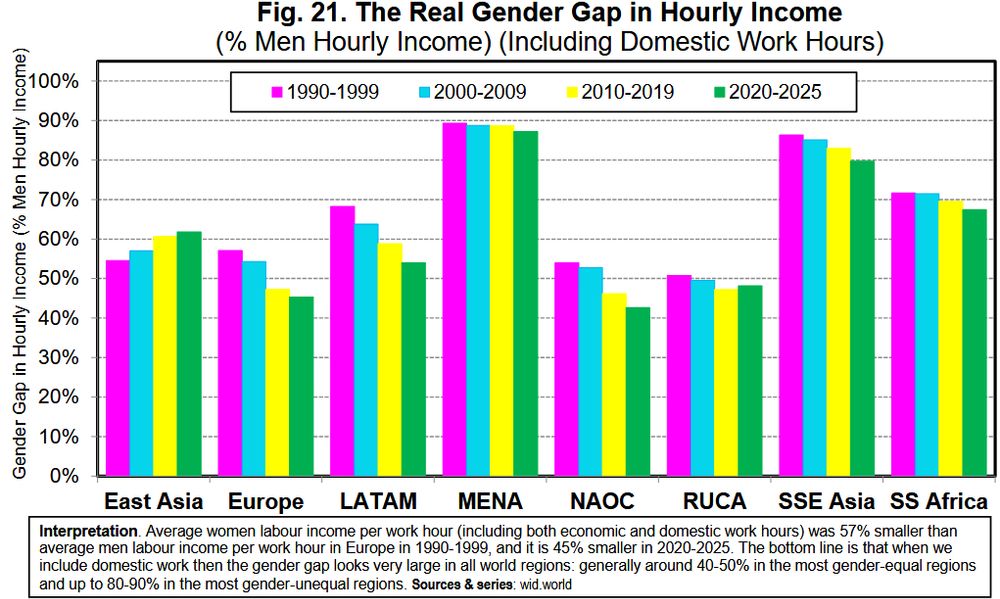
When unpaid domestic work is factored in, the “real” gender pay gap in hourly earnings rises to 40–50% in high-income countries—double the conventional estimates of 10–20%.
[6/8]
Women provide fewer hours of economic labour than men, but significantly more hours of (unpaid) domestic labour, particularly in low- and middle-income countries.
[5/8]
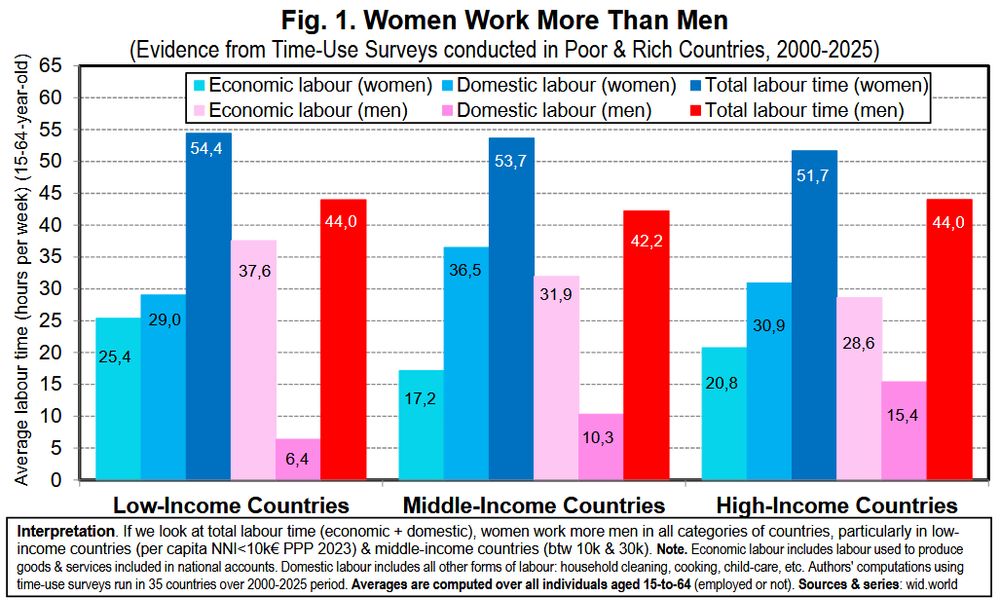
Women provide fewer hours of economic labour than men, but significantly more hours of (unpaid) domestic labour, particularly in low- and middle-income countries.
[5/8]
At the global level, hourly productivity (net domestic product per work hour) rose from 0.7€ in 1800 to 16€ in 2025 (PPP, 2025 €).
[4/8]

At the global level, hourly productivity (net domestic product per work hour) rose from 0.7€ in 1800 to 16€ in 2025 (PPP, 2025 €).
[4/8]
This happened through collective mobilizations, changing institutions and social norms.
[3/8]
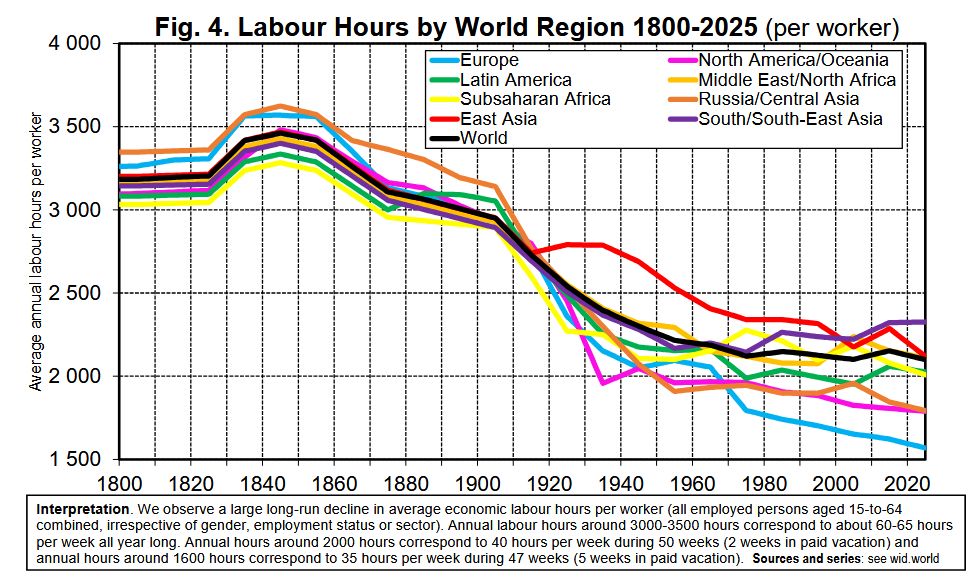
This happened through collective mobilizations, changing institutions and social norms.
[3/8]
If rich countries had absorbed the cost through reduced elite consumption, we could have reached near-complete productivity convergence between North and South by 2025.
[6/8]

If rich countries had absorbed the cost through reduced elite consumption, we could have reached near-complete productivity convergence between North and South by 2025.
[6/8]

